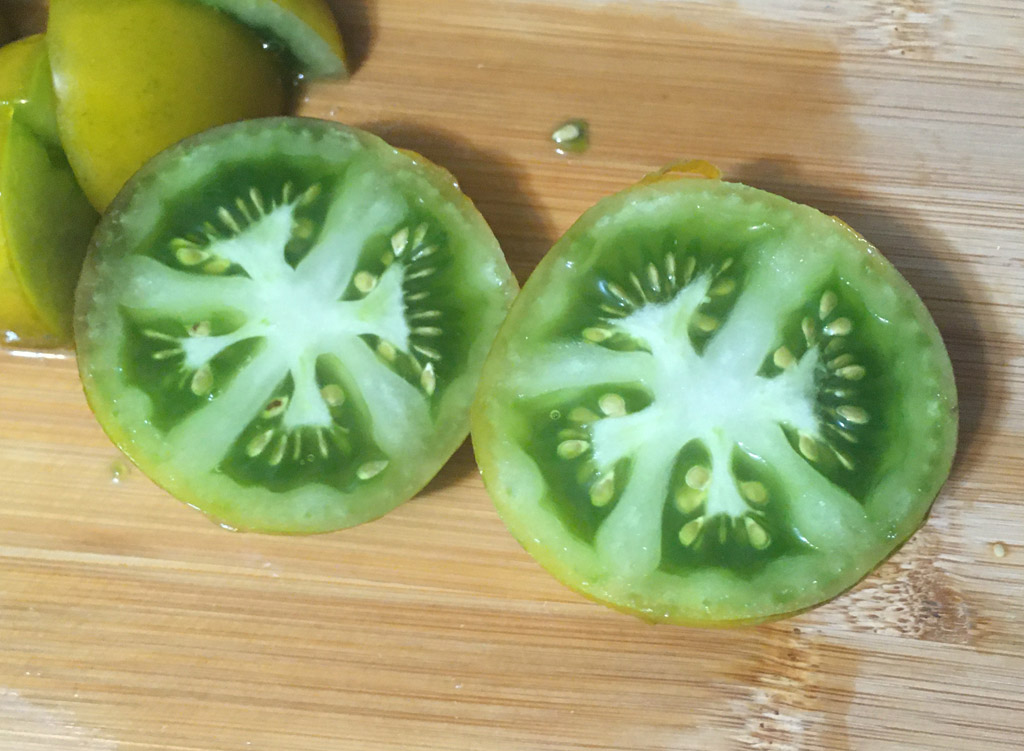As the urgency of the pandemic has gradually receded into societal memory, it’s left two old acquaintances in our care: rampant inflation, and a renewed interest in gardening.
For the last several springs, I have strived to grow enough tomatoes to take me from one season to the next, canning them in August like my grandmother did; at first, simply to ensure a supply, and now, to deny any sense of satisfaction to the four-dollar can of tomatoes. Despite these dual motivations, the depredations of rodents, viruses, and voles have always ensured that I will end up scouting the farmer’s market for half-bushels of discount bruised tomatoes, when it comes to canning time. But better that, than to give in to costly convenience.
Even if it won’t fulfill all my canning needs, it is the home-grown crop that I treasure the most, and wish the most to conduct to its most fruitful end. These are the yellow-green, the orange, and the purplish varieties, the ones with streaks and belly buttons and crinkly wrinkles, picked a bit before the garden mice have thought to nibble them, and left to ripen safely in a bowl, their ethylene essence gradually negotiating a consensus agreeable to all.
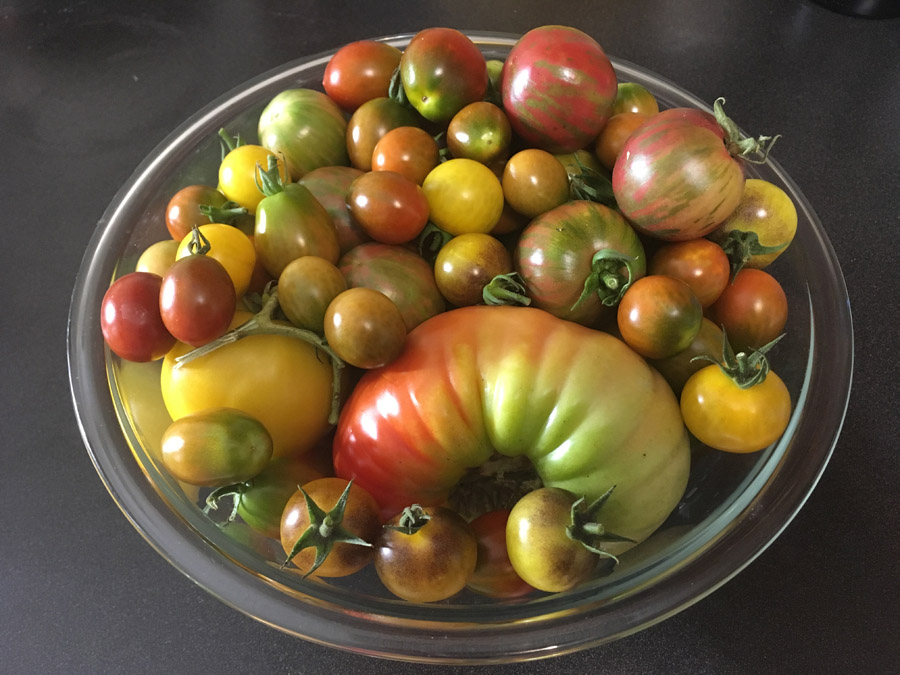
And then, not quite to a canning jar yet — first, perhaps, a salad of rainbow hues; acidic reds contrasting with sweetish yellows and tartish greens, bound together with smoky purples and a dash of salt. This is the taste of summer, as indelible as the scent of tomato leaves — both, a permanent anchor of some of my earliest memories, that many of us probably share — of bringing produce in from the garden, like the good little child that we were, and still try to be.
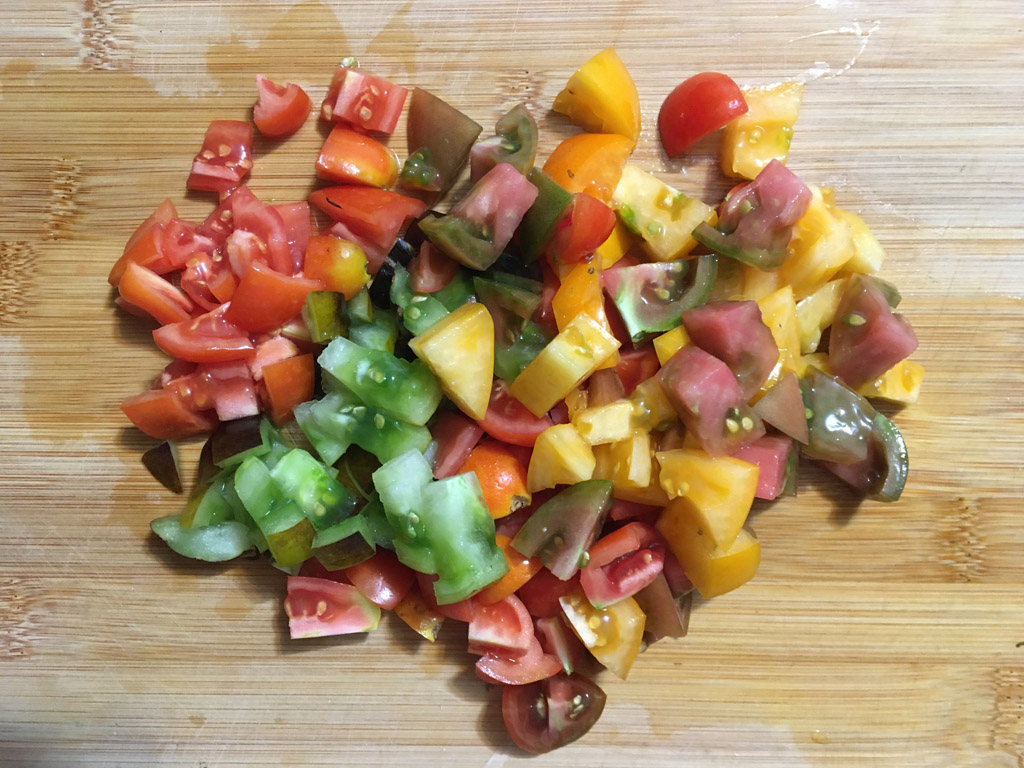
A red conspiracy
But to step in to any supermarket, you would think that all of the tomatoes in the world are red.
Below we see a canned-goods shelf in an upscale Michigan grocery, where the products on offer proceed rapidly from the mildly pricey to the shamelessly unaffordable. And yet, even as the selection continues off frame for a meter to the right and above — they are all red tomatoes.
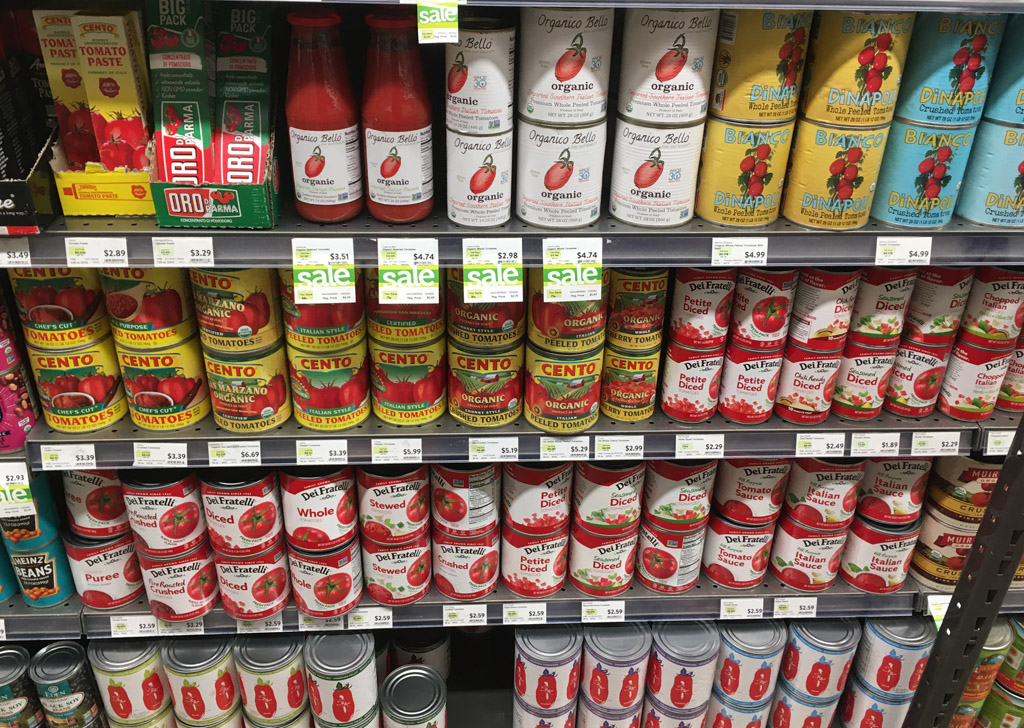
If red tomatoes alone can manage enough diversity to support such a range of retail price points, all sharing the same shelf, then why aren’t orange, green, and purple tomatoes getting in on the act? Or even specific named varieties of the reds, for that matter? Other than a visual nod to the oblong San Marzano, I could find little evidence that any of these products were even aware of which specific variety was in the can.
This, in a world where every craft beer lists the varieties of hops that bitters it, and every wine is categorized by its variety of grape — both, often, further venturing its own opinion on the dishes with which it should be paired?
Conservative red tomato, if you want to get four dollars, it’s time to get an agent!
Embrace diversity
A tomato plant is typically self-pollinating, meaning that the tiny bee shown below is doing more to feed its hunger for nectar and pollen than to pollinate the flower; a domesticated tomato’s reproductive parts are safely kept within the cone, and only a rare event will allow pollen from another variety to enter. This means that we can save seeds from a preferred variety and not worry about what else was planted nearby; last year’s bees are unlikely to have skewed its offspring in a different direction.

Occasionally though, or with the help of an experimenting gardener or plant breeder, varieties will cross. Looking through a quality seed catalog will prove that domestic tomatoes occur in a remarkable number of varieties, not all of which are red at all.
Orange salsa anyone?
The bowl of oranges below is in fact the August crop of an orange tomato variety that I’ve grown from seed ever since I bought its parent, an unidentified heirloom tomato, at a local grocery store a decade ago. Not knowing its true name, I’ve nicknamed it Orange Bowl. This variety always does well against diseases and bears an abundant crop, rivaling any other red variety I’ve grown. Thus it would seem to be commercially viable. Why isn’t it canned and gussied up, with a designer label and an origin story?

The bright yellow of the flesh inside is a great contrast to the traditional red. These fruits have a sweet, somewhat less acidic flavor than the reds, but it’s still full of punch — just a little different.
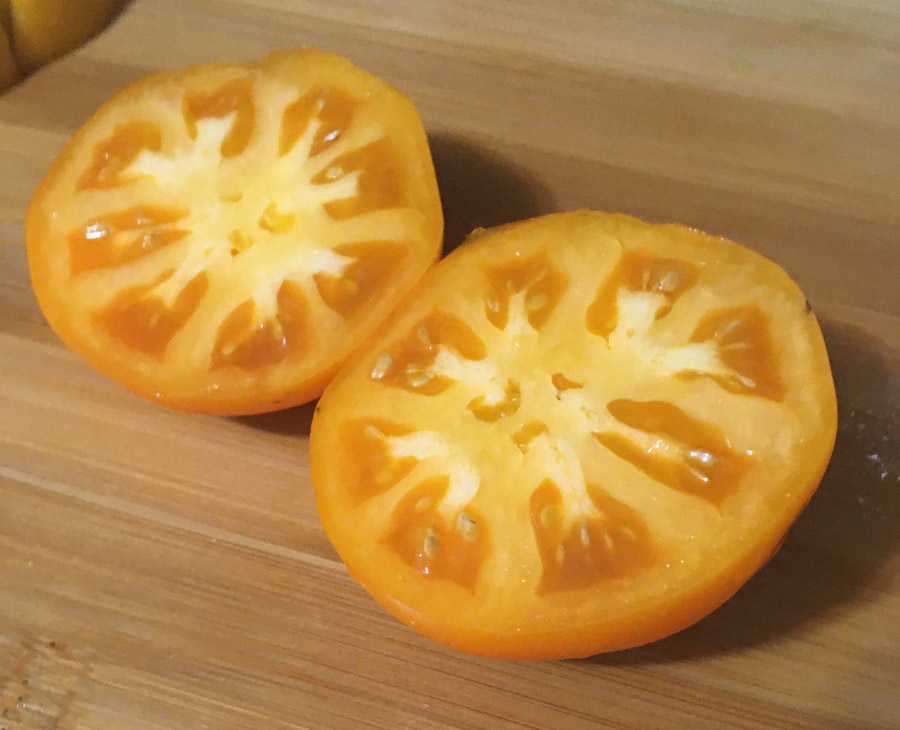
They are very good for canning, too — losing none of their orange color, and lending it later to things such as pizzas and sauces, which can now be delightfully orange instead of the usual red.
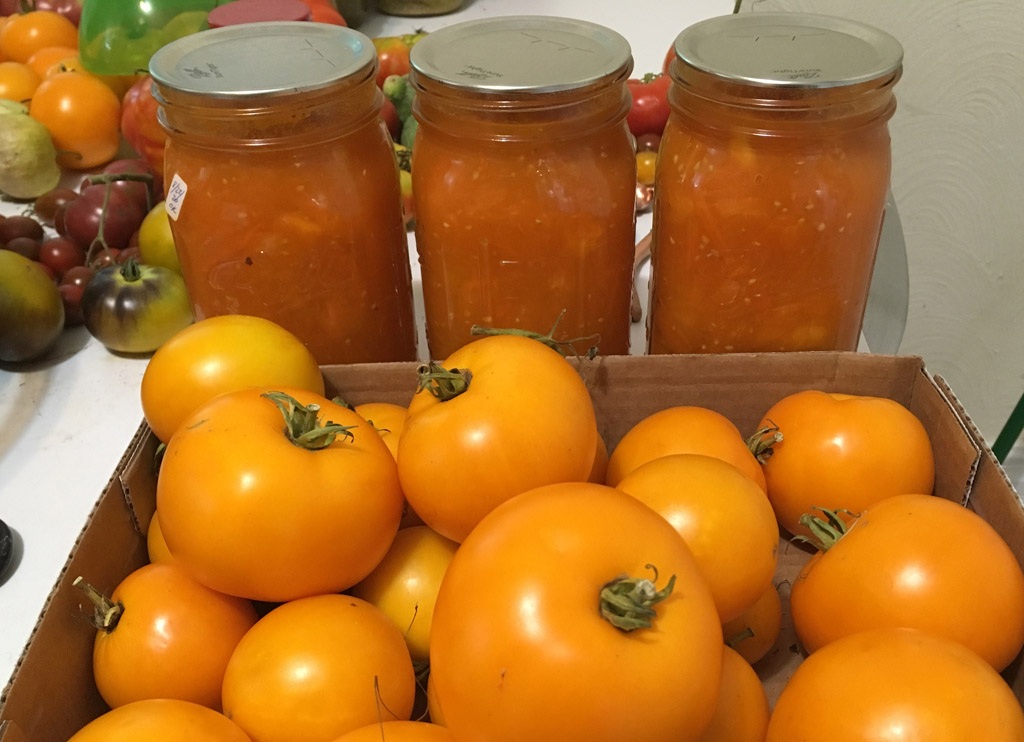
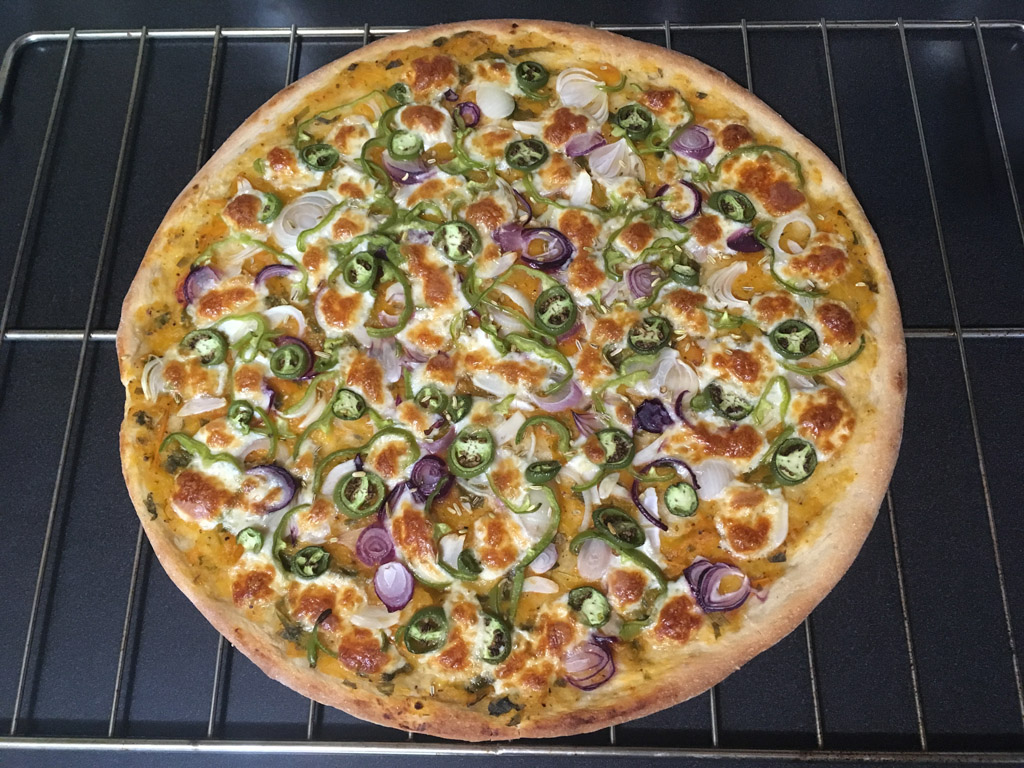
Salsa verde
Another favorite of this garden is the Wagner Blue-Green. When ripe, these are navy blue and dull yellow on the outside, but a surprisingly bright emerald green on the inside.
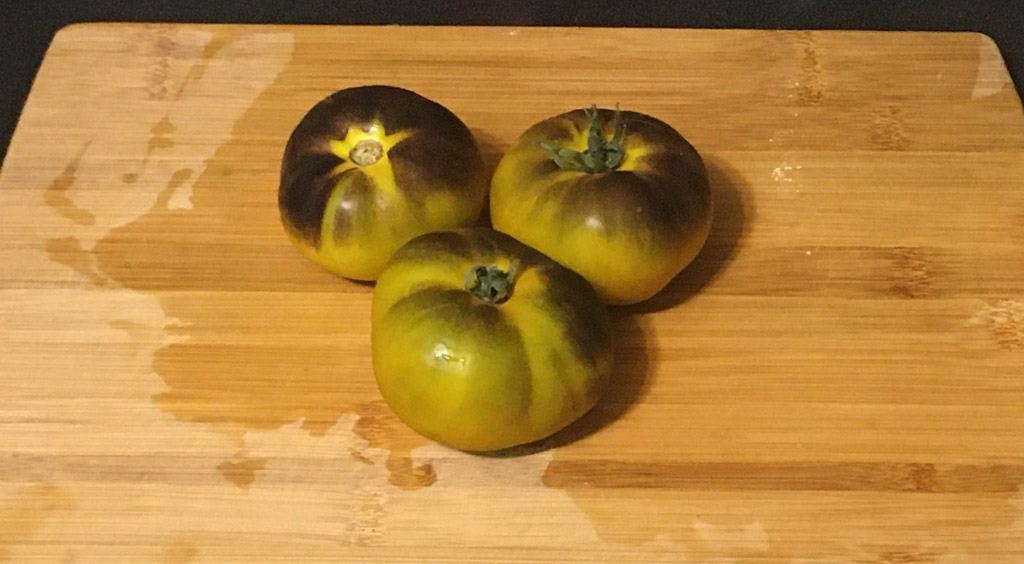
People see a green tomato and automatically think it’s unripe — but these will throw you for a loop. Eaten fresh, they are as delicious as they look, and make a great, totally green salsa. Even when cooked into a pizza sauce, they won’t disappoint, cooking up into an olive-green paste with a milder flavor that accepts spices well. I imagine that the color could be retained even better by removing the dark skins, or adding citric acid or vinegar, though I’ve never tried.
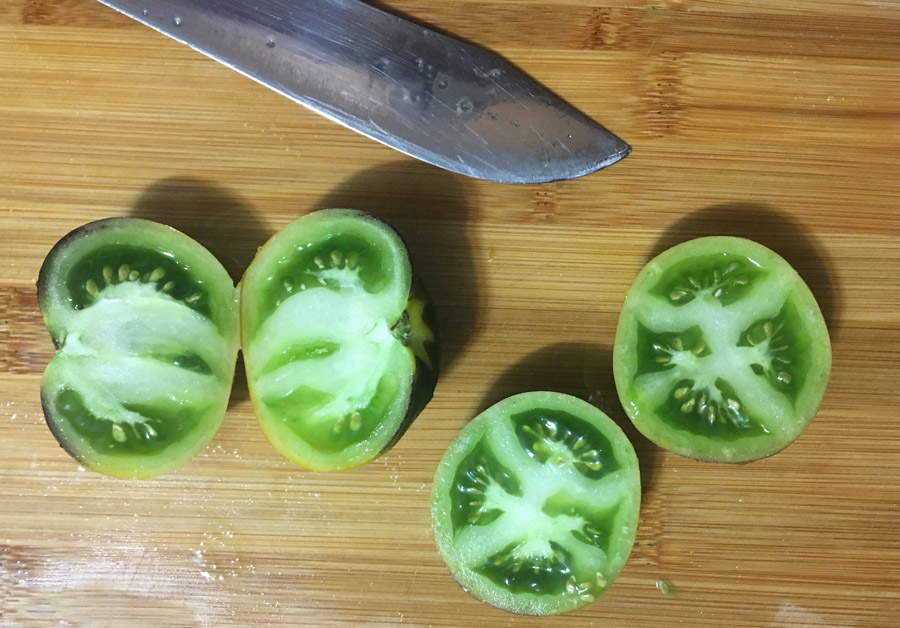

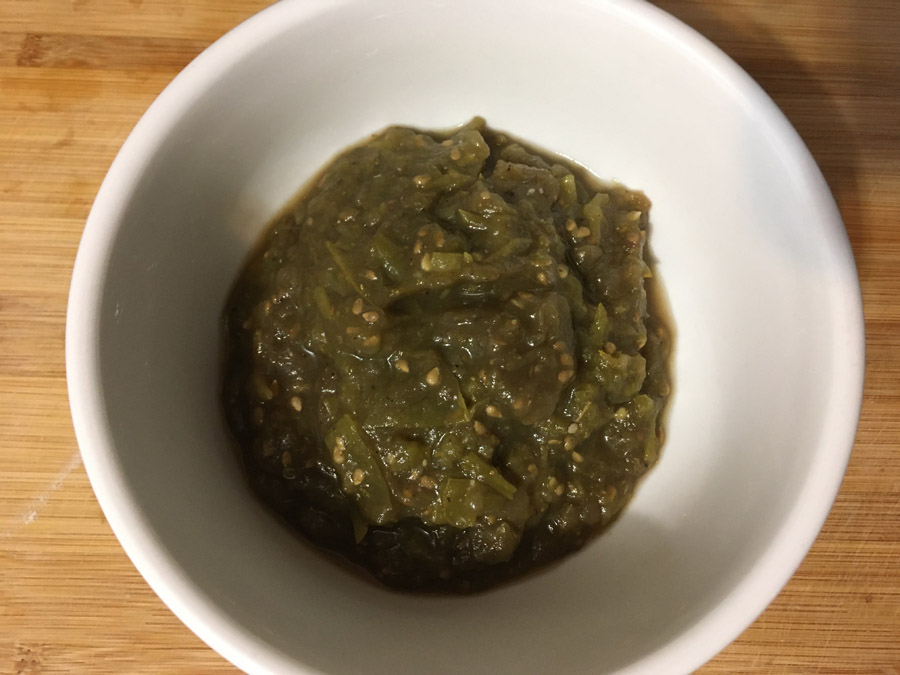
The unsung reds
I’ve also canned specific varieties of reds, and found that they often have profound differences in flavor and strength, that undoubtedly could be guided to best use by a chef with a better palate than mine. An unidentified purplish cherry tomato, canned with skins on as I always do, has made a very strong sauce; Black Vernissage makes another take on the same; Cherokee Purple makes a rich version that is a little smoky if you pay attention; San Marzano shades in a slightly different direction and serves as a point of reference for the others. Of these, San Marzano is the only one that I’ve seen identified specifically in a canned tomato product.
All of these rainbow varieties can be canned just like any other tomato. They vary in acid content, but if you follow USDA guidelines by adding two teaspoons of citric acid to every quart, any tomato variety that I know of will preserve perfectly in jars, for as long as you wish to hoard them.

So, upscale grocery store, I hate to be contrary, but — where is my can of Wagner Blue-Green, or Cherokee Purple, or Orange Bowl? I might pay four dollars for that.
But only if my garden doesn’t grow.
Article and photos Copyright 2023.
To be notified of new articles, visit https://whatshallweweird.com/subscribe/
